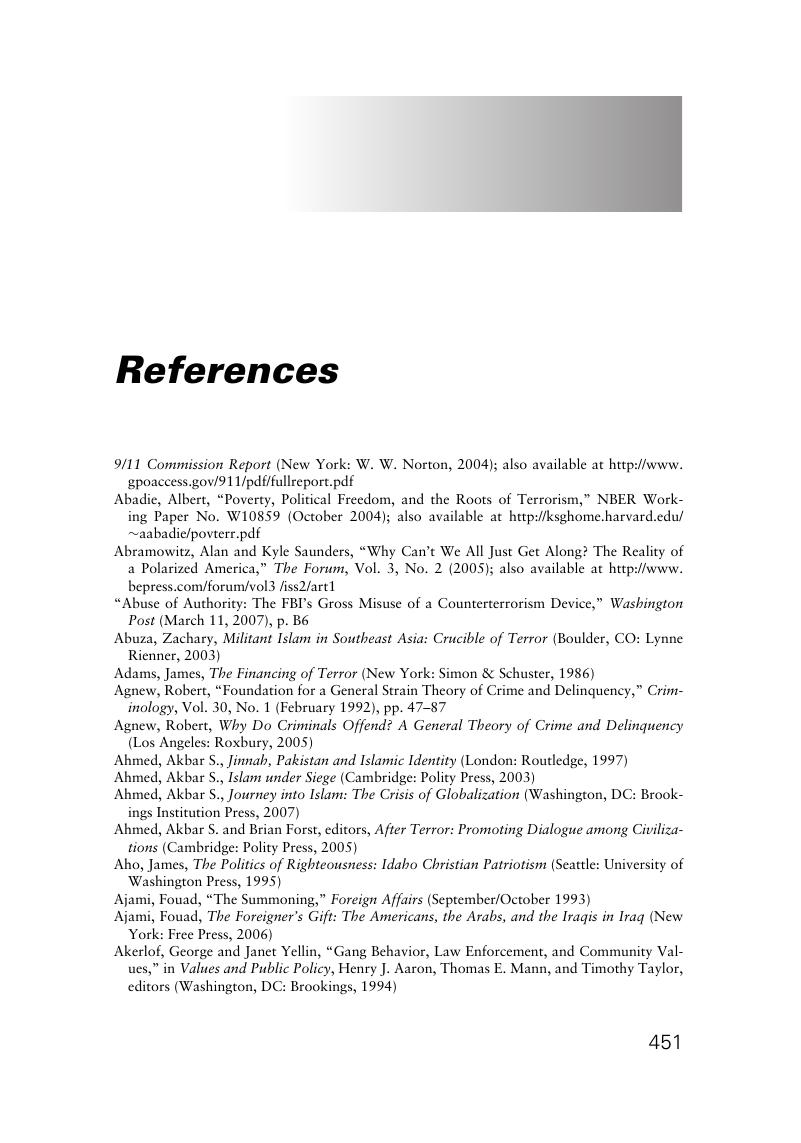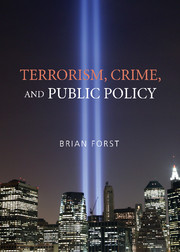Book contents
- Frontmatter
- Contents
- Credits
- Preface
- Acknowledgments
- 1 The Nature of Terrorism
- 2 Theories of Aggression and Terrorism
- 3 A Brief History of Terrorism
- 4 Two Trajectories of Humankind: Globalization or Clash?
- 5 Religion, the State, and Terrorism
- 6 Nonreligious Extremism and Terrorism
- 7 Technology and Terrorism
- 8 Terrorism throughout the World
- 9 Responses to Terrorism
- 10 Fear of Terrorism
- 11 Preventing Terrorism: Short-Term Approaches
- 12 Preventing Terrorism: Long-Term Strategies
- 13 Balancing Security and Rights to Liberty and Privacy
- 14 Toward a Safer and Saner Twenty-First Century
- Notes
- References
- Index
- References
References
Published online by Cambridge University Press: 05 June 2012
- Frontmatter
- Contents
- Credits
- Preface
- Acknowledgments
- 1 The Nature of Terrorism
- 2 Theories of Aggression and Terrorism
- 3 A Brief History of Terrorism
- 4 Two Trajectories of Humankind: Globalization or Clash?
- 5 Religion, the State, and Terrorism
- 6 Nonreligious Extremism and Terrorism
- 7 Technology and Terrorism
- 8 Terrorism throughout the World
- 9 Responses to Terrorism
- 10 Fear of Terrorism
- 11 Preventing Terrorism: Short-Term Approaches
- 12 Preventing Terrorism: Long-Term Strategies
- 13 Balancing Security and Rights to Liberty and Privacy
- 14 Toward a Safer and Saner Twenty-First Century
- Notes
- References
- Index
- References
Summary

- Type
- Chapter
- Information
- Terrorism, Crime, and Public Policy , pp. 451 - 478Publisher: Cambridge University PressPrint publication year: 2008



